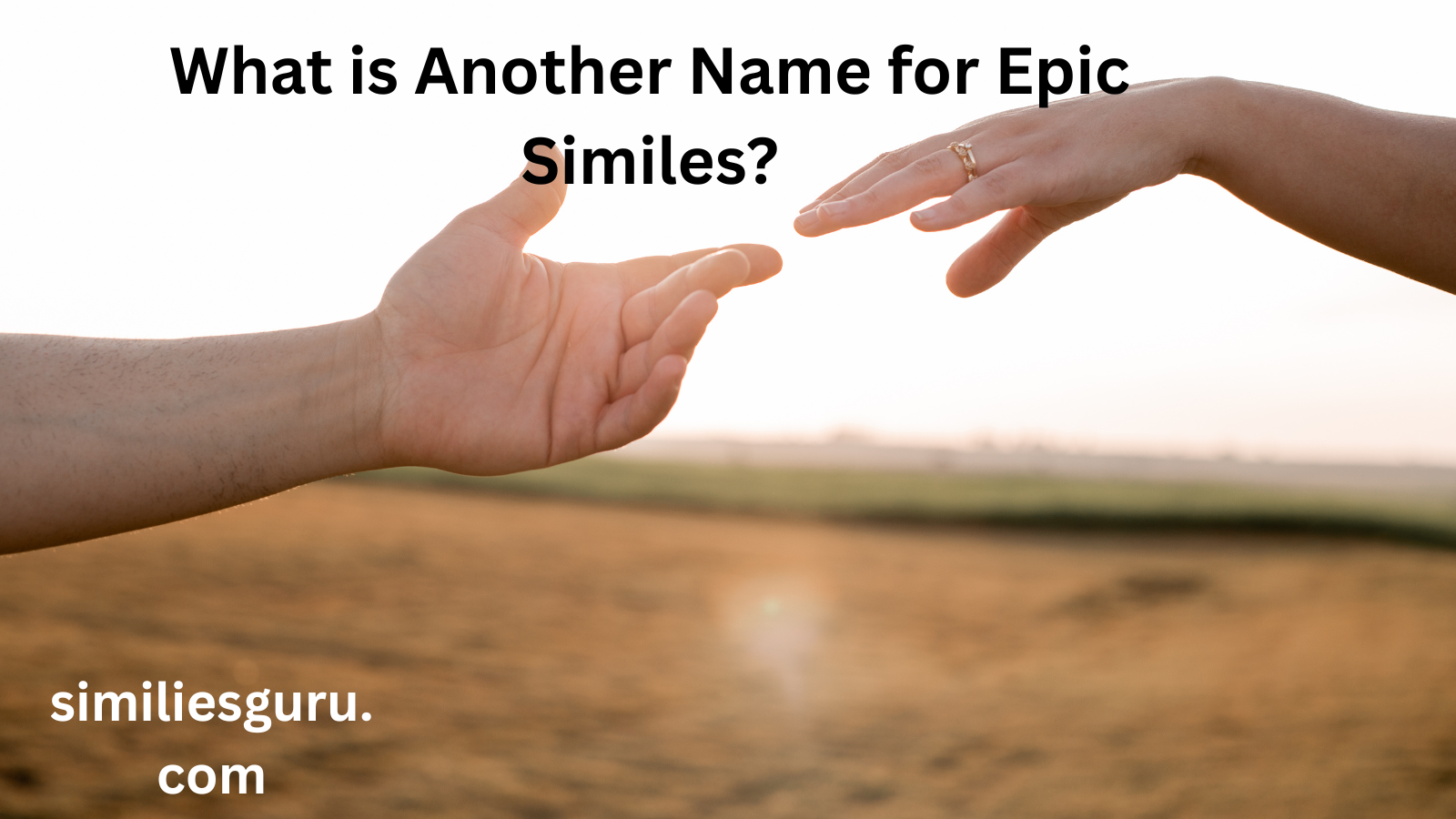Epic similes are a powerful literary device used to enhance storytelling, offering vivid imagery and deeper understanding. But while the phrase “epic simile” is well-known, there are many alternative ways to refer to this expressive technique depending on the tone and context. In this article, we will explore polite, professional, and casual alternatives to the phrase “what is another name for epic similes?” and dive into how to express this concept in different ways.
What Are Epic Similes?
Before diving into the alternatives, it’s essential to understand what an epic simile is. An epic simile, also known as a Homeric simile, is a detailed and extended comparison that is typically found in epic poetry. These similes are often used to describe something in a way that creates an emotional or visual impact on the reader. For example, in Homer’s Iliad, the warriors’ movements might be compared to the raging storm, heightening the sense of intensity.
Epic similes differ from regular similes in that they tend to be more elaborate and extended, sometimes stretching across several lines. They often involve comparisons to everyday events or objects that help clarify the grand scale of the epic being described.
What is Another Name for Epic Similes?
While the term “epic simile” is widely recognized, there are several other ways to express the same concept, depending on the context, formality, and the audience you’re addressing. Below, we’ll explore 10 alternatives.
1. Extended Simile
An extended simile refers to a comparison that lasts over several lines or sentences. It’s similar to an epic simile but may not carry the same grandeur or context of an epic tale.
- Example: “The warrior fought as fiercely as a lion, charging through the battlefield with strength unmatched.”
2. Homeric Simile
The Homeric simile is essentially the same as an epic simile, named after the Greek poet Homer, who famously used them in works like The Iliad and The Odyssey. These similes are known for their grandeur and vivid comparisons.
- Example: “The horses raced across the plain like a herd of wild stallions, their hooves pounding the earth like thunder.”
3. Heroic Simile
A heroic simile is another way to refer to an epic simile, especially when it’s used to describe the actions of a hero. The comparison often elevates the hero’s feats or characteristics to a divine or larger-than-life level.
- Example: “The hero stood tall, as unshakable as a mountain, his courage soaring above that of any mortal.”
4. Grand Simile
This term emphasizes the scale and grandeur of the comparison, making it well-suited for describing epic narratives. It suggests an elevated sense of comparison, often seen in literature that deals with gods, heroes, and monumental events.
- Example: “The army advanced like a tidal wave, unstoppable and overwhelming in its power.”
5. Elaborate Simile
Elaborate similes extend beyond a simple comparison, often taking the time to add details and nuances that create a vivid mental picture. This term is slightly more general but still applies to the extended nature of epic similes.
- Example: “The queen’s dress shimmered like the surface of a lake at sunrise, its folds glistening with every movement.”
6. Descriptive Simile
Descriptive similes focus on providing detailed imagery through comparison, aiming to create a strong visual or emotional impact. While not always as grand as an epic simile, they still serve the purpose of enriching the description.
- Example: “The clouds parted like a curtain opening on a grand stage, revealing the first rays of dawn.”
7. Figurative Comparison
A figurative comparison is a more technical or academic way of referring to any type of simile, including epic ones. This term is broader but can still accurately describe the effect of an epic simile.
- Example: “The hero’s strength was a figurative comparison to the mighty oak, steady and unyielding against the storms.”
8. Imagery-Based Simile
This term emphasizes the importance of creating vivid, striking images in the reader’s mind, which is a key function of epic similes. It focuses on the visual and sensory aspects of the comparison.
- Example: “The wind howled through the trees like a wolf’s eerie cry, its voice carrying over the hills.”
9. Vivid Comparison
A vivid comparison focuses on creating a sharp, clear image in the mind of the reader. This phrase works well for describing the kind of powerful imagery that epic similes aim to evoke.
- Example: “The knight’s armor gleamed like a thousand suns, bright and blinding against the darkening sky.”
10. Amplified Simile
Amplified similes take a simple comparison and magnify it, making the description even more intense or elaborate. This aligns closely with the effect of epic similes, which often blow everyday comparisons out of proportion.
- Example: “Her laughter echoed through the hall like a thousand bells ringing, each note louder and more jubilant than the last.”
11. Mythological Simile
A mythological simile draws on figures from myth and legend to create comparisons. While this term is less common, it can be a fitting alternative when the simile is inspired by mythical imagery.
- Example: “The warrior’s sword glowed like the shield of Achilles, an artifact of legend and power.”
Tone Nuances and Context
Each of these alternatives can be chosen based on the tone and formality of the conversation or writing. For instance:
- In formal writing or scholarly discussions, terms like “figurative comparison” or “extended simile” might be most appropriate.
- In casual conversations, phrases like “vivid comparison” or “elaborate simile” might be more accessible.
- When writing creative works such as poetry or epic storytelling, “Homeric simile” or “grand simile” would be more fitting, as these terms align with the literary traditions of grand narratives.
11 Texting Examples (User-Friendly and Optimized for Google)
- “The sunset was like a painting, beautiful and full of colors.”
- “He ran as fast as a cheetah chasing its prey.”
- “Her smile lit up the room like the first rays of the morning sun.”
- “The waves crashed on the shore like thunder rolling through the sky.”
- “The forest was as quiet as a mouse, with only the wind whispering.”
- “The music played like a melody from a distant dream.”
- “His strength was like the might of a mountain, unmovable and solid.”
- “The stars sparkled in the sky like diamonds scattered across a velvet cloth.”
- “Her voice was as sweet as honey, warm and inviting.”
- “The dragon’s wings beat like a storm in the sky, fierce and powerful.”
- “The city bustled with energy, like a beehive on a busy summer day.”
Conclusion
In conclusion, there are many ways to refer to epic similes, each offering a unique nuance depending on context and tone. From “Homeric similes” to “heroic similes”, these alternatives allow for flexibility in expressing grand and vivid comparisons in both formal and informal settings. By understanding the tone and audience, you can select the most suitable term to convey the dramatic power of these literary devices.



